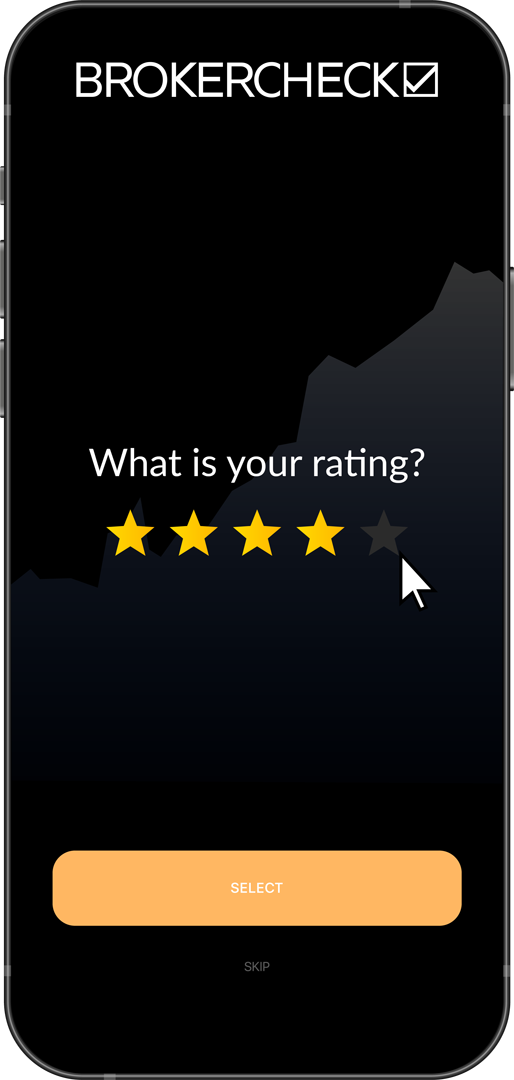1. Introduction of the Auto Fibonacci Extension Indicator
1.1 Introduction to Fibonacci and Its Relevance in Trading
The Fibonacci sequence, named after the Italian mathematician Leonardo of Pisa, also known as Fibonacci, has been a cornerstone in mathematical and trading circles. In trading, Fibonacci ratios, derived from this sequence, are used to identify potential reversal levels on price charts. These ratios include 23.6%, 38.2%, 50%, 61.8%, and 100%, which are key to understanding the Auto Fibonacci Extension Indicator.
1.2 Concept and Functionality of the Auto Fibonacci Extension Indicator
The Auto Fibonacci Extension Indicator is a technical analysis tool that automatically plots Fibonacci extension levels on a price chart. It extends beyond the standard Fibonacci retracement levels to provide potential targets for the continuation of a trend. This indicator is particularly useful in trending markets, where it helps traders identify possible future levels of support and resistance.
1.3 How It Differs from Fibonacci Retracements
While Fibonacci retracements are used to predict potential support and resistance levels during a retracement within a trend, Fibonacci extensions are focused on predicting levels outside the current range after a retracement has occurred. The Auto Fibonacci Extension Indicator automates this process, making it more efficient and less subjective than manual plotting.
1.4 Applications in Various Market Conditions
This indicator is versatile and can be applied in various market conditions, including stocks, forex, commodities, and cryptocurrency markets. Its effectiveness is higher in trending markets where the identification of continuation patterns is crucial for traders.
1.5 Visual Representation and Chart Examples
On a chart, the Auto Fibonacci Extension Indicator appears as lines drawn at the key Fibonacci levels extending from a chosen high and low point. For example, in an uptrend, a trader might plot the Fibonacci extension levels from a swing low to a swing high to identify potential resistance levels above the current price.

2. Calculation Process of the Auto Fibonacci Extension Indicator
2.1 Understanding the Basics of Calculation
The calculation of the Auto Fibonacci Extension Indicator involves identifying three critical points on the chart: the start point (swing low), the end point (swing high), and the retracement point. These points are essential for plotting the Fibonacci extension levels.
2.2 Step-by-Step Calculation Guide
- Identify Significant Price Points: The first step is to determine the significant high (peak) and low (trough) over a selected time frame. This selection is pivotal as it sets the foundation for the extension levels.
- Plotting the Initial Range: Once the high and low are identified, the indicator automatically plots a line connecting these two points. This range is the basis for calculating the extension levels.
- Applying Fibonacci Ratios: The Auto Fibonacci Extension Indicator then applies the Fibonacci ratios (such as 61.8%, 100%, 161.8%, etc.) to the distance between the high and low. These ratios are calculated from the swing high or low, depending on the trend direction.
- Generating Extension Levels: The indicator projects these ratios above or below the range (depending on whether it’s an uptrend or downtrend) to generate potential resistance or support levels. For example, in an uptrend, if the swing low is at $100 and the swing high is at $200, the 161.8% extension level would be plotted at $361.8 ($100 + ($200 – $100) * 1.618).
2.3 Adjustments and Customization
Most trading platforms that feature this indicator allow for customization of the extension levels and the selection of the swing points. Traders can add or remove specific Fibonacci levels based on their trading strategy and preferences.
2.4 Example Illustration
Consider a stock in an uptrend, where the Auto Fibonacci Extension Indicator is applied from a swing low of $50 to a swing high of $100. If the stock retraces to $75 (a 50% retracement), the indicator will project extension levels above $100 (like 161.8% at $180.50, 261.8% at $261, etc.), offering potential profit targets.
3. Optimal Values for Setup in Different Timeframes
3.1 Tailoring to Different Trading Styles
The Auto Fibonacci Extension Indicator can be adapted to various trading styles – from day trading to swing trading and long-term investing. The selection of swing highs and lows for plotting the indicator depends significantly on the timeframe and the trader’s strategy.
3.2 Short-Term Trading (Day Trading)
- Timeframe: Typically, 5-minute to 1-hour charts are used.
- Optimal Values: For day trading, more emphasis is placed on the lower Fibonacci extension levels like 123.6%, 138.2%, and 150%. These levels are often reached within shorter timeframes.
- Example: In a 15-minute chart, if the swing high is at $100 and swing low at $90, the 123.6% level would be a potential target at $102.36.
3.3 Medium-Term Trading (Swing Trading)
- Timeframe: 1-hour to daily charts are preferred.
- Optimal Values: Swing traders often focus on 161.8%, 200%, and 261.8% levels for potential targets or reversals.
- Example: On a 4-hour chart, a swing low at $150 and a high at $200 might indicate a 161.8% extension level at $230.90 as a target.
3.4 Long-Term Trading (Investing)
- Timeframe: Daily to weekly charts.
- Optimal Values: Long-term traders look at higher levels like 261.8%, 423.6%, and even 685.4% for long-term goals.
- Example: In a weekly timeframe, with a low at $500 and a high at $700, the 423.6% level would be a potential long-term target at $1348.20.
3.5 Adjusting to Market Volatility
- Volatility Consideration: In highly volatile markets, traders might use tighter ranges to adapt to quick price movements.
- Flexibility in Application: It’s crucial to be flexible and adjust the levels according to market behavior and personal risk tolerance.

| Trading Style | Timeframe | Optimal Fibonacci Levels |
|---|---|---|
| Day Trading | 5-min to 1-hour | 123.6%, 138.2%, 150% |
| Swing Trading | 1-hour to Daily | 161.8%, 200%, 261.8% |
| Long-Term Invest | Daily to Weekly | 261.8%, 423.6%, 685.4% |
4. Interpretation of the Auto Fibonacci Extension Indicator
4.1 Deciphering the Indicator’s Signals
Understanding how to interpret the Auto Fibonacci Extension Indicator is crucial for effective trading. This involves recognizing the potential price levels where the market might experience support or resistance.
4.2 In an Uptrend
- Extension as Resistance: In an uptrend, the extension levels are viewed as potential resistance levels where the price might pause or reverse.
- Breaking Through Levels: If the price breaks through a Fibonacci level, it often moves towards the next extension level.
- Example: If a stock breaks past the 161.8% level, traders might anticipate a move towards the 200% level.

4.3 In a Downtrend
- Extension as Support: Conversely, in a downtrend, these levels can act as potential support zones.
- Reversals at Levels: A bounce from a Fibonacci level could indicate a potential short-term reversal or consolidation.
- Example: A stock dropping to the 161.8% extension level might find support, leading to a potential bounce.
4.4 Confirmation with Other Indicators
- Combining Tools: It’s advisable to use the Auto Fibonacci Extension Indicator in conjunction with other technical analysis tools for confirmation. For instance, a Relative Strength Index (RSI) divergence at a Fibonacci level could strengthen the case for a reversal.
- Volume Analysis: Observing volume can also provide additional insights. Higher volume at a Fibonacci level might indicate stronger support or resistance.
4.5 Risk Management Considerations
- Stop Loss and Take Profit: Setting stop-loss orders just beyond the Fibonacci levels can help manage risk. Similarly, take-profit orders can be set near anticipated resistance (in uptrends) or support levels (in downtrends).
| Market Condition | Fibonacci Level Action | Trader’s Potential Action |
|---|---|---|
| Uptrend | Resistance at Level | Consider taking profits or shorting |
| Breakthrough Level | Look for next extension level | |
| Downtrend | Support at Level | Consider buying or taking profits |
| Breakdown Below Level | Look for next extension level |
5. Combination with Other Technical Indicators
5.1 Complementary Indicators for Enhanced Analysis
Integrating the Auto Fibonacci Extension Indicator with other technical tools can enhance analysis accuracy and improve trading decisions. This multi-indicator approach provides a more holistic view of the market.
5.2 Combining with Moving Averages
- Purpose: Moving averages (MAs) help identify the trend direction and potential reversal points.
- Strategy: Use MAs to confirm the trend direction indicated by Fibonacci levels. For example, if price action is above a significant MA (like the 50-day or 200-day MA) and approaching a Fibonacci extension level in an uptrend, it reinforces the level’s significance.
5.3 Incorporating Momentum Indicators
- Popular Choices: Relative Strength Index (RSI) and Stochastic Oscillator.
- Application: These indicators help identify overbought or oversold conditions. A Fibonacci extension level coinciding with an overbought RSI reading might indicate a potential reversal point.

5.4 Using Volume Indicators
- Relevance of Volume: Volume validates the strength of a price level.
- Implementation: High volume at a Fibonacci extension level can signify strong support or resistance. For instance, a significant increase in volume near a Fibonacci level during a breakout signals strong market interest.
5.5 Synergy with Candlestick Patterns
- Combination Benefits: Candlestick patterns can provide entry and exit signals.
- Example: A bearish candlestick pattern forming at a Fibonacci extension level in an uptrend may signal a good opportunity to exit or initiate a short position.
| Indicator Type | Purpose in Combination | Example of Use with Fibonacci Extensions |
|---|---|---|
| Moving Averages | Trend Confirmation | Confirming trend direction at Fibonacci levels |
| Momentum Indicators | Identify Overbought/Oversold | RSI divergence at Fibonacci extension level |
| Volume Indicators | Strength of Level Confirmation | High volume breakout at Fibonacci level |
| Candlestick Patterns | Entry/Exit Signal Confirmation | Bearish pattern at extension level in uptrend |
6. Risk Management Using the Auto Fibonacci Extension Indicator
6.1 Importance of Risk Management in Trading
Effective risk management is vital in trading to protect capital and ensure longevity in the markets. The Auto Fibonacci Extension Indicator, while useful, should be used within a sound risk management framework.
6.2 Setting Stop-Loss Orders
- Strategic Placement: Stop-loss orders should be placed at levels that invalidate your trade hypothesis. For instance, just below a Fibonacci support level in an uptrend or above a Fibonacci resistance level in a downtrend.
- Example: If you enter a trade at the 161.8% extension level, consider setting a stop-loss just below this level.
6.3 Managing Position Size
- Balancing Risk: Adjust your position size based on the distance to your stop-loss to maintain a consistent risk per trade.
- Calculation: Use a fixed percentage of your trading capital to determine the maximum loss per trade (e.g., 1-2% of your capital).
6.4 Using Take-Profit Orders
- Profit Targets: Set take-profit orders near the next Fibonacci extension level to capture potential price movements.
- Flexibility: Be flexible with take-profit levels based on market momentum and other indicators’ signals.
6.5 Adapting to Market Conditions
- Volatility Adjustment: In highly volatile markets, consider wider stop-losses to avoid being prematurely stopped out.
- Continuous Assessment: Regularly assess market conditions and adjust your trading strategy accordingly.
6.6 Diversification
- Spread Risk: Diversify your trades across different instruments and markets to spread risk.
- Correlation Awareness: Be aware of correlations between assets to avoid concentrated risk.
| Strategy | Application | Example |
|---|---|---|
| Stop-Loss Orders | Limit Losses | Below Fibonacci level in uptrends |
| Position Sizing | Consistent Risk Per Trade | Fixed % of capital per trade |
| Take-Profit Orders | Capture Predicted Movements | Near next Fibonacci extension level |
| Market Adjustment | Adapt to Volatility | Wider stop-losses in volatile conditions |
| Diversification | Spread Risk | Trades across different assets |










